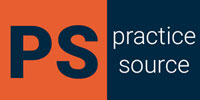Hiring new employees is a fundamental part of running a business. However, it also involves intricate legal matters that, if overlooked, can result in significant consequences for your business or organization. Thus, it’s crucial to be aware of your legal obligations as an employer. Let’s expound more on the key legal aspects you should know as you hire new employees:
Job Description and Advertisements
For starters, you should ensure your job descriptions and advertisements don’t discriminate against any group of people. The U.S. Equal Employment Opportunity Commission (EEOC) enforces laws that prohibit job discrimination. You therefore need to avoid mentioning age, race, religion, sex, or disability in job advertisements unless it’s a bona fide occupational qualification.
Eligibility to Work in the Country
All employers in the United States are also required by the Immigration Reform and Control Act (IRCA) to verify the identity and employment eligibility of every individual they hire. This involves completing an Employment Eligibility Verification form, also known as an I-9 form, for each new hire within three days of the employee’s first day.
Drug Testing
Drug testing laws vary widely by state. Some states have comprehensive laws that regulate or restrict an employer’s right to require drug testing, while others have little to no specific legislation in this area. For example, California drug testing laws stipulate that it can only be done under very specific circumstances. You can require a potential employee to take a drug test as a condition of being hired. That said, this should only be administered after the job offer is made but prior to the employee beginning work.
Tip: As an employer, you should be familiar with the drug testing laws in your specific state or states of operation to avoid costly legal action against you
Federal Employer Identification Number (EIN) and payroll
If it’s your first time hiring, ensure you have an EIN, which is used by the IRS to track your business’s tax obligations. Without it, you will not be able to report taxes or issue payroll. You need to also set up a payroll system that follows all federal, state, and local tax laws.
This includes withholding the correct amounts from your employees’ pay for Social Security and Medicare taxes and federal and state income taxes. You will also need to pay the employer portion of Social Security, Medicare, and unemployment taxes.
Employee Handbook
An employee handbook is a critical tool for onboarding new hires and informing them about your company’s policies, procedures, and expectations. The employee handbook should include sections on anti-discrimination policies, compensation, benefits, workplace conduct, and more. Make sure it complies with all applicable federal, state, and local laws.
Workers’ Compensation Insurance and Workplace Safety and Health Compliance
Businesses with employees typically must carry workers’ compensation insurance to cover medical treatment, disability, and death benefits in the event an employee is injured or dies as a result of work-related incidents.
Be sure to comply with laws like the Employee Retirement Income Security Act (ERISA) and the Affordable Care Act (ACA) when offering benefits like health insurance and retirement plans. Also, ensure your workplace complies with all Occupational Safety and Health Administration (OSHA) regulations. These laws require employers to provide a safe working environment, free from recognized hazards.
Final remarks
This legal checklist for hiring new employees is by no means exhaustive, but it offers a solid starting point for compliance. Hiring can be a complex process, and the legal landscape changes frequently. It’s advisable to consult with a legal expert or HR professional to ensure you are up-to-date with all obligations and requirements. Following these guidelines will not only keep your business legally compliant, but it will also help create a transparent, fair, and harmonious workplace that attracts and retains top talent.




